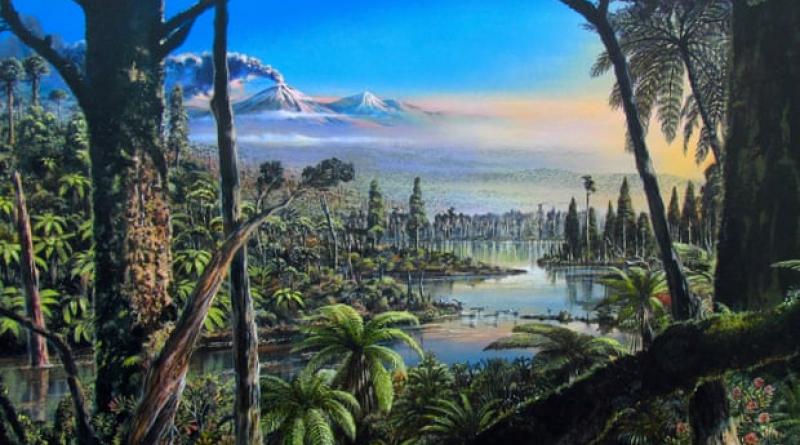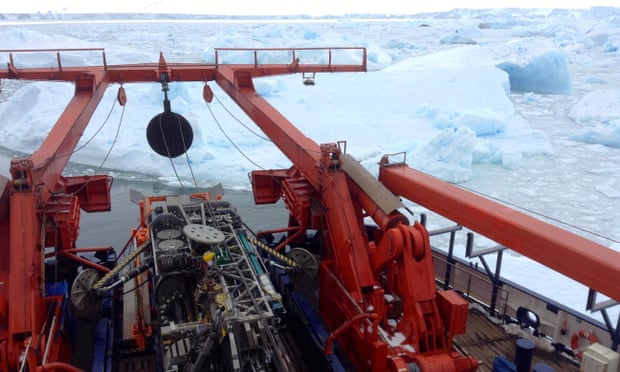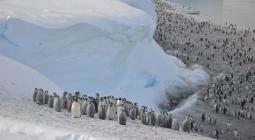Antarctica was warm enough for rainforest near south pole 90m years ago.

Think of Antarctica and it is probably sweeping expanses of ice, and the odd penguin, that come to mind. But at the time of the dinosaurs the continent was covered in swampy rainforest.
Now experts say they have found the most southerly evidence yet of this environment in plant material extracted from beneath the seafloor in west Antarctica.
The Cretaceous, 145m to 66m years ago, was a warm period during which Earth had a greenhouse climate and vegetation grew in Antarctica.
Scientists say the new discovery not only reveals that swampy rainforests were thriving near the south pole about 90m years ago but that temperatures were higher than expected. Such conditions, they add, could only have been produced if carbon dioxide levels were far higher than previously thought and there were no glaciers in the region.
“We didn’t know that this Cretaceous greenhouse climate was that extreme,” said Dr Johann Klages of the Alfred Wegener Institute in Germany and a co-author of the research. “It shows us what carbon dioxide is able to do.”

Writing in the journal Nature, the team explained how, in 2017, they drilled a narrow hole down into the seafloor near the Pine Island glacier in west Antarctica. This location is about 2,000km (1,200 miles) from today’s south pole, but about 90m years ago it was about 900km from the pole.
The hole was drilled and material extracted using a remotely operated rig. “It is like a spaceship sitting on the seafloor,” said Klages.
The first few metres of material were glacial sediment, dating to about 25,000 years ago, while the next 25m were sandstone, dating to about 45m years ago – something Klages said was of little interest to the team.
As they worked, a huge field of sea ice was approaching. “It was getting a little dangerous,” said Klages. “We said: ‘OK, three more metres and then we can evacuate the coring site here.’ And in this three metres we had this exciting new material.”
This three-metre section was composed of mudstone, topped by a coal-like material, and packed with soil from the ancient forest, complete with roots, spores and pollen – with the latter identified as coming from plants including conifer trees and ferns.
“It is like if you would go to a forest near your house somewhere and drill a hole into the forest soil,” said Klages. “It is really pristine … it was amazing.”
The team found evidence of more than 65 different kinds of plants within the material, revealing that the landscape near the south pole would have been covered in a swampy conifer rainforest similar to that found today in the north-western part of the South Island of New Zealand. The material was dated to between 92m and 83m years ago.
It would have had average annual temperatures of 12-13C (53-55F), “which is warmer than in Germany today”, Klages said, adding that analysis of chemicals left by photosynthetic organisms called cyanobacteria revealed that surface waters, for example of lakes, would have been a pleasant 20C.
Crucially, said Kages, computer modelling shows that such an environment so close to the south pole – where in the winter there is darkness for four months – would only have been possible if greenhouse gas concentrations were far higher than previously thought and the land surface were covered in vegetation.
In other words there were no ice sheets present – something Klages noted had been a matter of debate.
Dr James Bendle, an expert in organic geochemistry from the University of Birmingham, said that studying the Antarctic ecosystem was hugely important in understanding past and future climate change, adding that unabated use of fossil fuels use could push concentrations of carbon dioxide to levels similar to those 90m years ago by the start of the next century.
“Ultimately, if we have an atmosphere of more than 1,000 parts per million of carbon dioxide, we are committing ourselves to a future planet that has little to no ice, and ultimately an Antarctic continent that would be vegetated and wouldn’t have an ice cover,” he said.
1 April 2020
The Guardian




